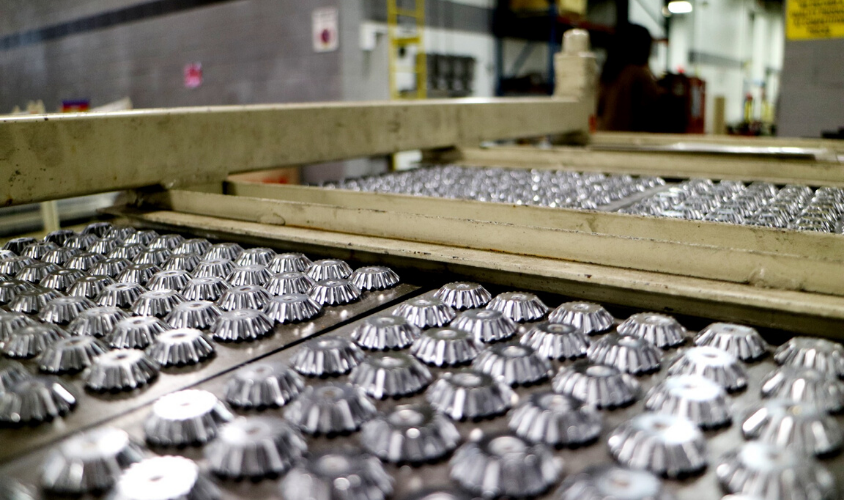Hard Chrome Plating for Heavy Wear Applications
In any industry, it is vital to keep costs down and efficiency up in order to keep profit margins high. Businesses lose so much time and money every year in broken or worn-out equipment, as well as through excessive production costs.
What if there was a solution that could help keep heavy wear components of equipment from breaking down prematurely while saving businesses time and money? Enter hard chrome plating.

Why Hard Chrome for Wear Applications
Most people are familiar with chrome plating as an aesthetic application, such as on automobile wheels or jewelry. This is called decorative plating. While quite attractive, decorative chrome plating doesn’t provide much in the way of protection and is not what ChromeTech of Wisconsin specializes in.
Hard chrome plating, on the other hand, provides a number of practical benefits for industrial settings. Chrome’s hardness rates 68-72 on the Hardness Rockwell C (HRC) scale. Chrome is the hardest metal that is commercially deposited from a bath.
In industrial wear applications, hard chrome can be applied in thicknesses ranging from 0.002” to 0.020.” This allows for a wide coverage range of wear needs in a variety of environments.
Hard Chrome Can be Applied Only Where Needed
It is not necessary to plate an entire part in order to provide optimal protection with chrome. We can deposit chrome exclusively to high friction areas that require wear protection.
We accomplish this by masking off mounting areas and any other non-wear surfaces in order to coat only the wear surfaces. This allows the area to be targeted for wear without changing how the rest of the part works or fits.
How is the Hard Chrome Thickness Determined for the Wear Application?
The best way to determine the ideal chrome thickness for wear application is by conducting field tests under real-world conditions. Agricultural OEMs, for example, will test a range of different thicknesses to discover the ideal thickness for a specific part in a specific setting.
Oftentimes, the act of simply using the chrome-plated equipment will naturally polish the chrome part’s wear surface. When this happens, the protection longevity of the chrome increases due to the decrease in friction that occurs with polishing. Of course, the longer the hard chrome lasts, the lower your maintenance costs will be over time.
What Other Benefits are There to Using Chrome Wear Protection?
Hard chrome application allows OEMs to provide highly durable parts without increasing engineering and production costs. They can offer standard stock parts with an option for having chrome applied for high wear applications. Customers can choose to apply hard chrome only to those areas that need it most, while customers who do not need high wear application protection don’t have to purchase it. Either way, the base part is exactly the same.
In agricultural settings, there may be a variety of crop types within the same geographical region. Even those crops that are of the same type can have surprising variances depending on location. These variances require different levels of protection for optimal durability. Hard chrome plating allows the buyer not only to add the option if needed but also to specify the ideal thickness for his or her own unique requirements.
The hardness of chrome also permits OEMs to manufacture quality parts using less expensive base materials rather than abrasive resistant material. Abrasive resistant materials are often much more costly than standard materials, and they can be more difficult to use. Hard chrome plating as an option keeps production costs low for OEMs, which they can then pass on as savings to customers in order to remain competitive. Customers save on costs as well, and everyone wins.
Does Chrome Application Require Changes to the Original Part?
Proper preparation is crucial to producing or enhancing a quality part. Any imperfections that may be present in the original surface will be present in the chromed surface. Therefore, pre-plating steps may be necessary in order to enhance adhesion, surface conditions and friction properties. Some of these may include:
- Make the base material as uniform as possible.
- Remove weld splatter or other impurities mechanically.
- Surface impurities and oxidation are removed before entering the plating tank.
Proper finishing is also crucial to a quality, long-lasting part. If the base material is rated above 40 HRC, we may bake the part post-plating to protect against hydrogen embrittlement. Polishing is another post-plating step that can improve the aesthetics and durability of the part.

The Bottom Line About Hard Chrome Plating
As you can see, hard chrome for wear applications provides a variety of advantages that benefit OEMs and end-users alike. Whichever side you fall on, hard chrome offers a way to protect your bottom dollar, whether it’s through lower production costs or maintenance costs.
ChromeTech has a long history of working with these wear applications, both in the development of engineering solutions and in the solving of existing wear problems. Let us help you with your wear applications today.
